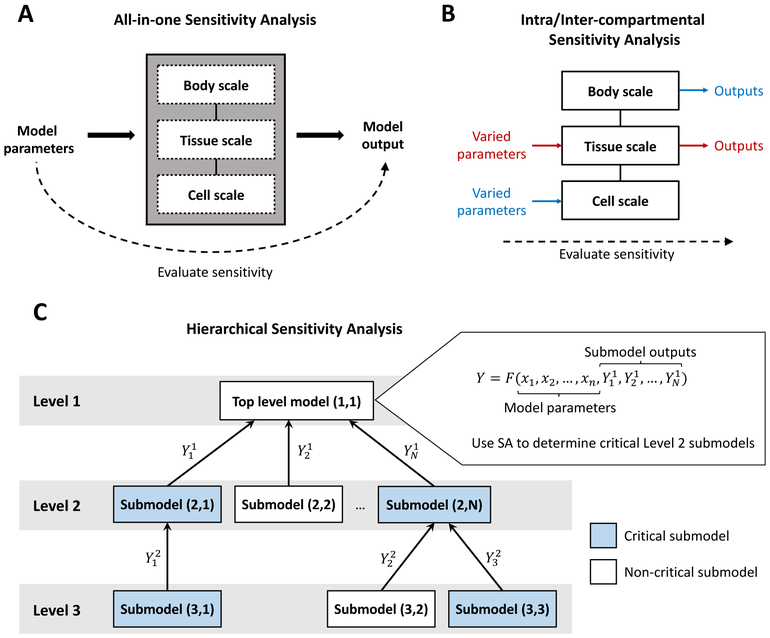Figure 2:
(A) All-in-one sensitivity analysis: the full model is treated as a black box with all or a subset of model parameters being varied. (B) Intra/inter-compartmental sensitivity analysis: parameters for a given scale are varied and compared to outputs from the same (intra; red) or a different (inter; blue) scale. In this example, intra-compartmental analysis is performed on the tissue scale and inter-compartmental analysis is performed by varying the cell scale parameters and comparing to the whole-body scale outputs. (C) Hierarchical sensitivity analysis: analysis is first performed on the top level model, replacing the outputs of Level 2 submodels as constant parameters, to determine which Level 2 submodels are critical. This is then repeated for the critical Level 2 submodels to determine if any Level 3 submodels are critical. Each submodel has an output that is used as input for the next highest level of the hierarchy.

